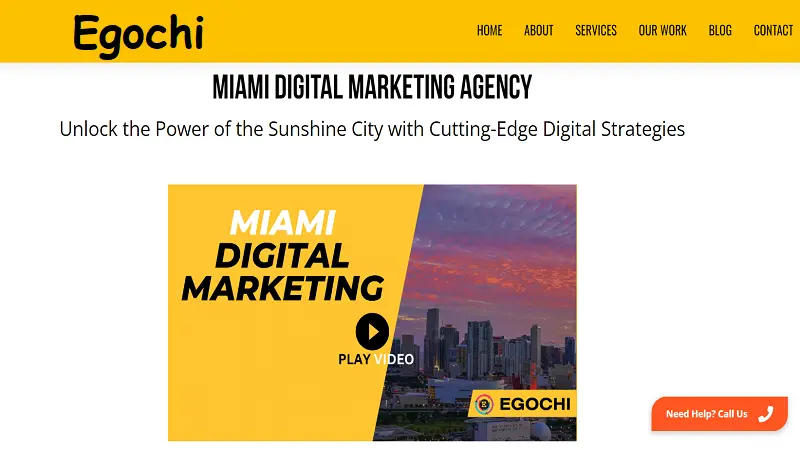In today’s digital-centric world, content marketing is crucial in achieving your business goals and connecting with your target audience. Research has shown that content marketing generates three times the leads for businesses than traditional marketing methods, such as paid searches. Consequently, developing a strategy that aligns your content with your business objectives and defines the best way to engage your audience is essential. This article will guide you through creating a content marketing strategy that resonates with your target audience and drives business growth.
Step 1: Define Your Business Goals and Objectives
The first step in developing a robust content marketing strategy is understanding your organization’s overarching business goals, team objectives, and campaign-specific aims. This will help determine which Key Performance Indicators (KPIs) to use to measure your content’s success. Content marketing goals that align with your company’s objectives could include the following:
1. Increasing website traffic
2. Generating more leads
3. Enhancing brand awareness
4. Improving conversion rates
5. Boosting customer satisfaction and loyalty
6. Establishing thought leadership and enhancing credibility
Step 2: Know Your Target Audience
Understanding your target audience’s needs wants, and preferences is critical in developing a targeted content strategy. Identify their pain points, demographics, and behavior to create content that effectively addresses their needs in their preferred language and formats. Research your target audience through the following steps:
1. Create user personas – Build detailed profiles representing your target audience segments. Include demographics, preferences, and pain points.
2. Online research – Look at forums, social media posts, and reviews to understand the preferences and concerns of your audience.
3. Employ analytics tools – Social media platforms, Google Analytics, and other data analysis tools provide valuable user behavior and preferences insights.
4. Market research – Surveys, focus groups, and interviews can provide a deep understanding of your potential customers’ opinions and preferences.
Step 3: Conduct a Content Audit
A content audit involves systematically assessing your existing content to determine which pieces effectively engage your target audience and achieve your set goals. This evaluation will help you:
1. Identify gaps in your content
2. Repurpose or update underperforming content
3. Remove outdated or irrelevant content
4. Improve SEO practices for better results
Step 4: Choose Content Types and Distribution Channels
Identify the content formats that best convey your brand’s message, resonate with your audience, and fit within your budget. Choose various content types to connect with your target audience at different stages of their journey, from awareness to sales. Some popular content types include:
1. Blog posts
2. Infographics
3. Videos
4. E-books and whitepapers
5. Podcasts
6. Social media posts
Select appropriate distribution channels based on where your audience spends the most time and aligns best with your content types. Some possible options include your website, company blog, social media platforms, email marketing, and guest posting on relevant websites.
Step 5: Develop a Content Calendar
Establish a content calendar that outlines your content plan in terms of themes, topics, formats, and publishing dates. This should detail:
1. Content themes and topics
2. Content formats (articles, videos, etc.)
3. Publishing platforms (blogs, social media, etc.)
4. The frequency of content publishing (daily, weekly, monthly)
5. Overseeing the person responsible for each task
This will ensure a steady stream of content production and distribution and facilitate collaboration among team members.
Step 6: Create and Distribute Engaging Content
With your content plan in place, it’s time to create high-quality, targeted content. Keep the following in mind as you produce and distribute your content:
1. Use storytelling techniques to engage your audience and make complex topics relatable and understandable.
2. Optimize your content for search engines to improve visibility and drive organic traffic by including keywords and improving meta descriptions.
3. Always proofread your content for errors and ensure it is visually appealing and easy to read.
4. Adapt your tone and style to your target audience and platform preferences.
5. Monitor and track engagement to refine your content’s distribution for maximum reach.
Step 7: Measure and Modify
It is essential to consistently measure the performance of your content marketing efforts against your KPIs to determine what works and what doesn’t. Analyze engagement and conversion rates, social media shares, search engine rankings, and more. Use these data-driven insights to modify your content strategy and improve your overall results continually.
Conclusion
Developing a content marketing strategy requires setting business-aligned goals, understanding your target audience, conducting a content audit, choosing appropriate channels and formats, creating engaging content, and measuring performance to refine your approach. By following these strategic steps, you can create a content marketing plan that resonates with your audience, aligns with your business goals, and ultimately drives growth and success.








